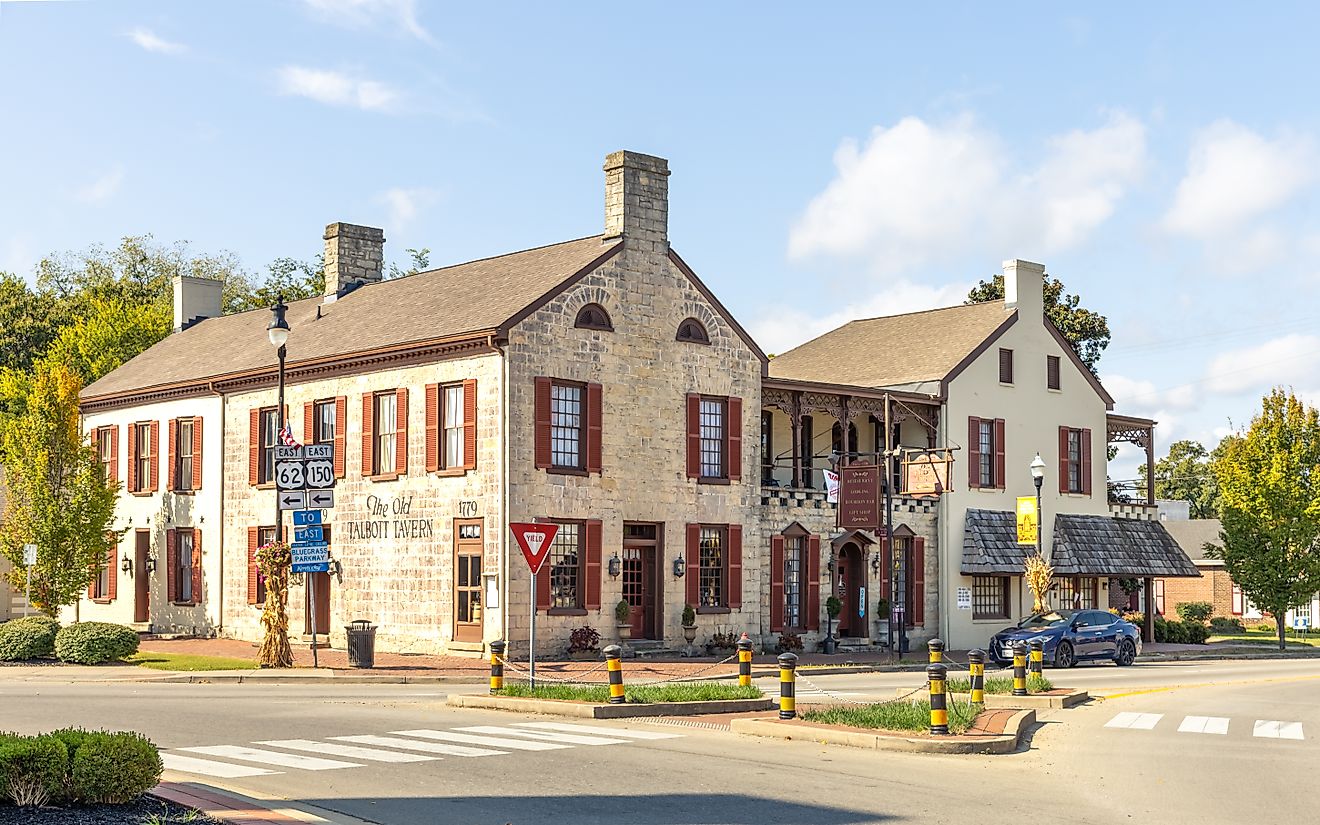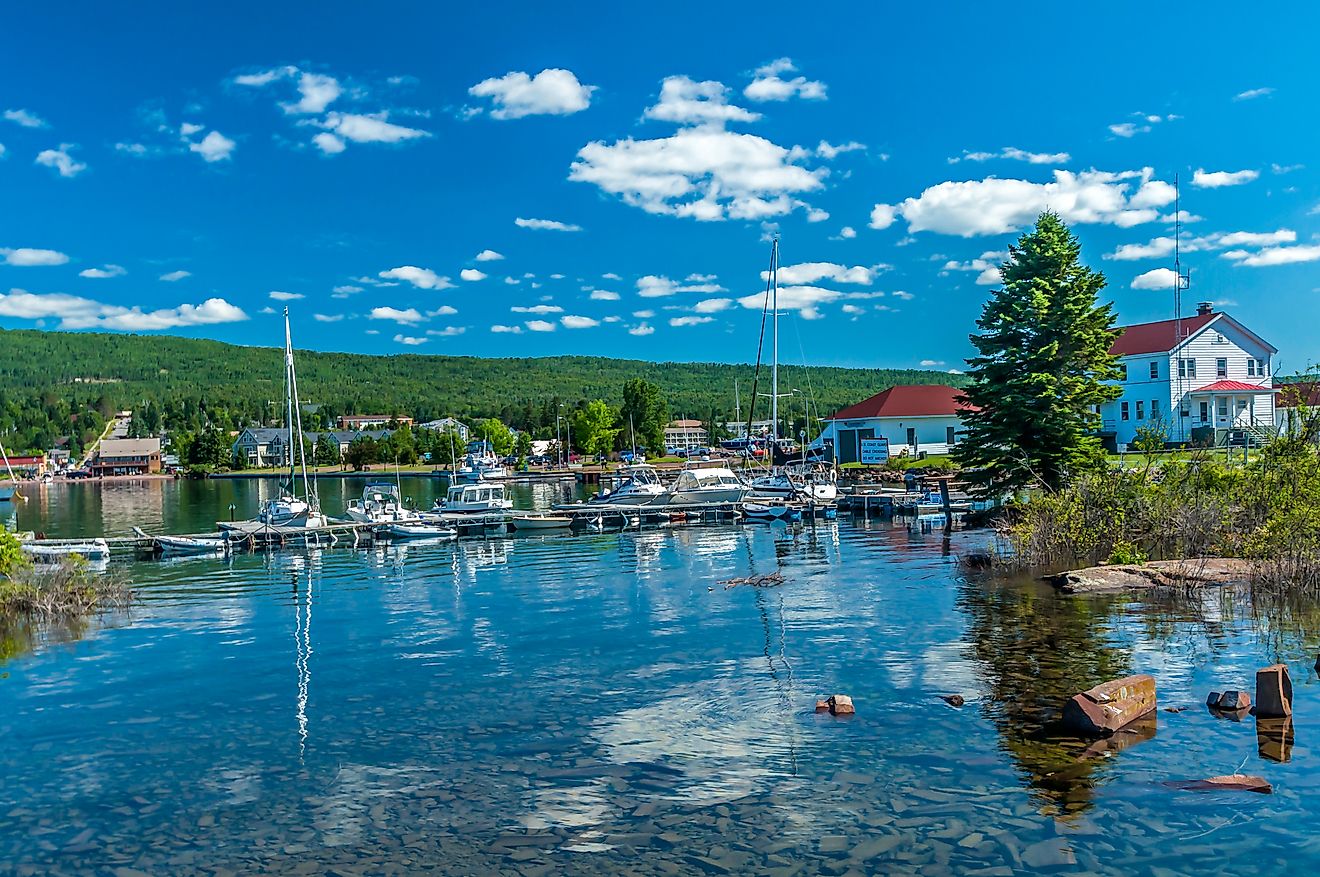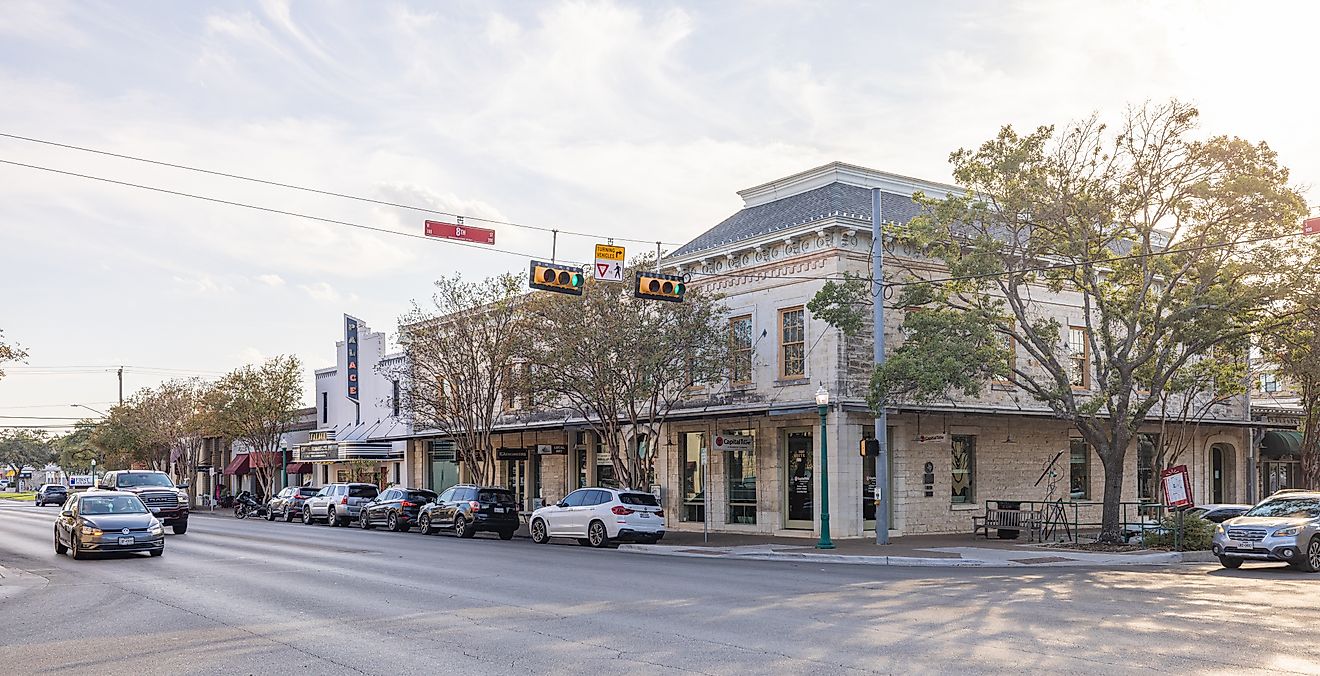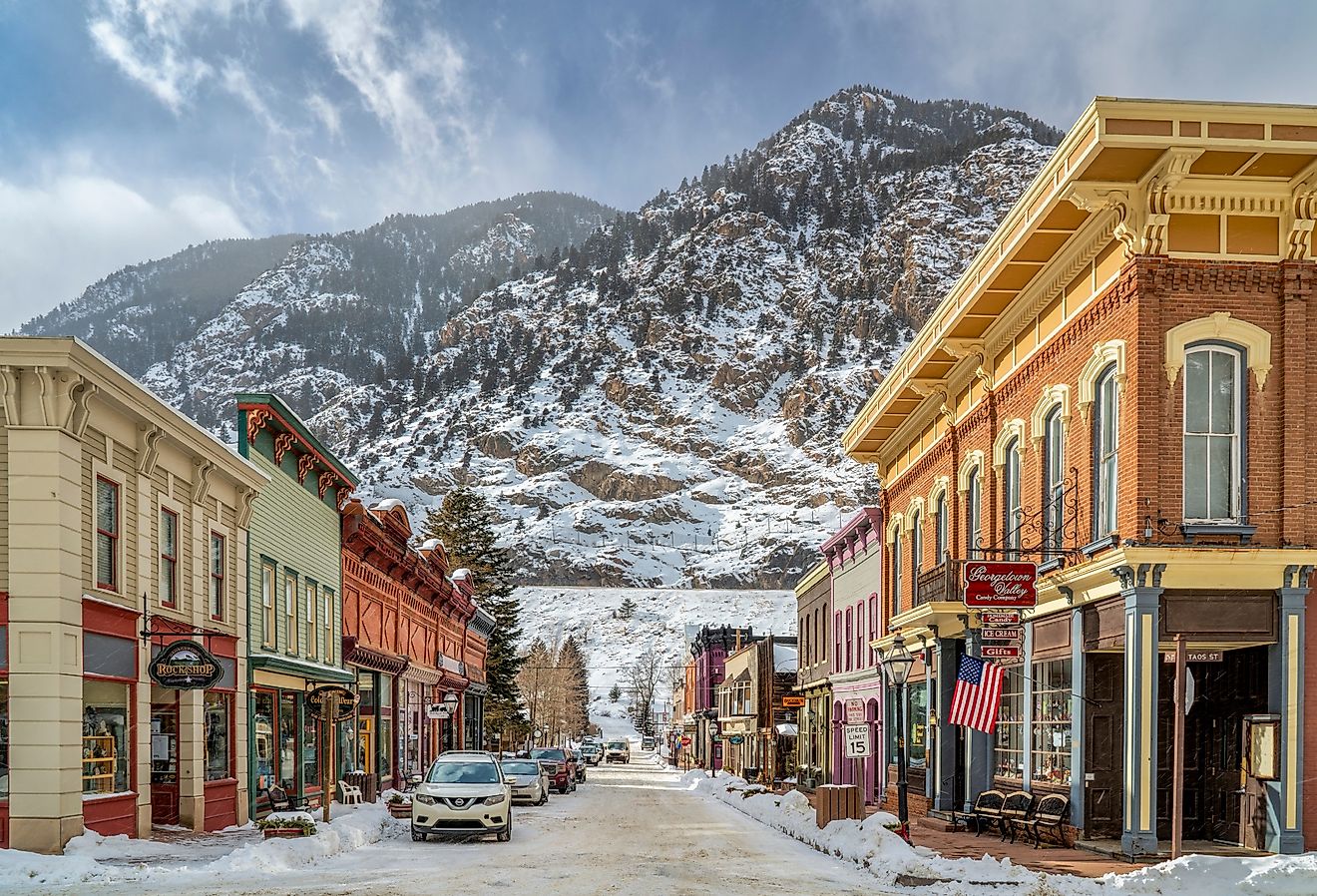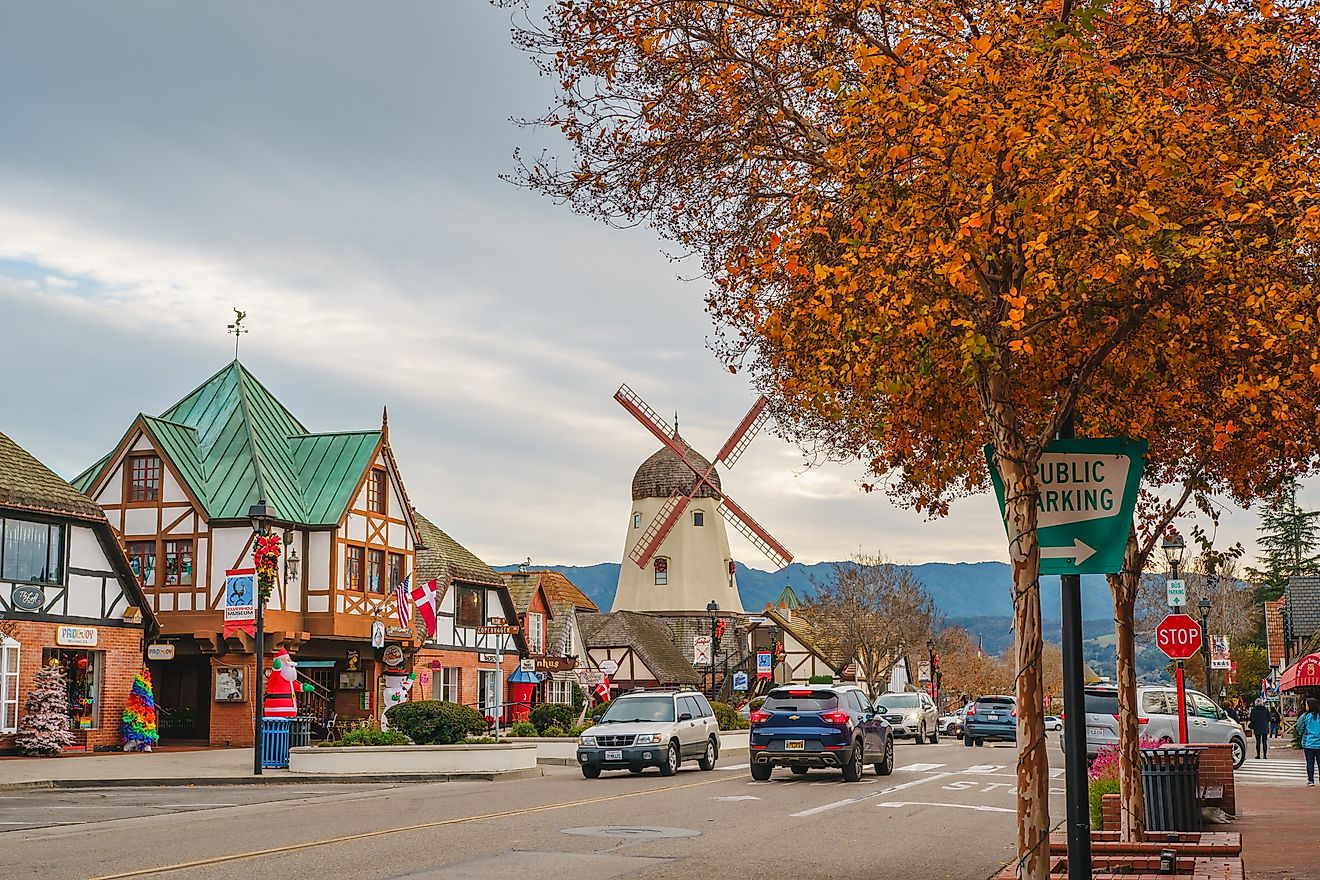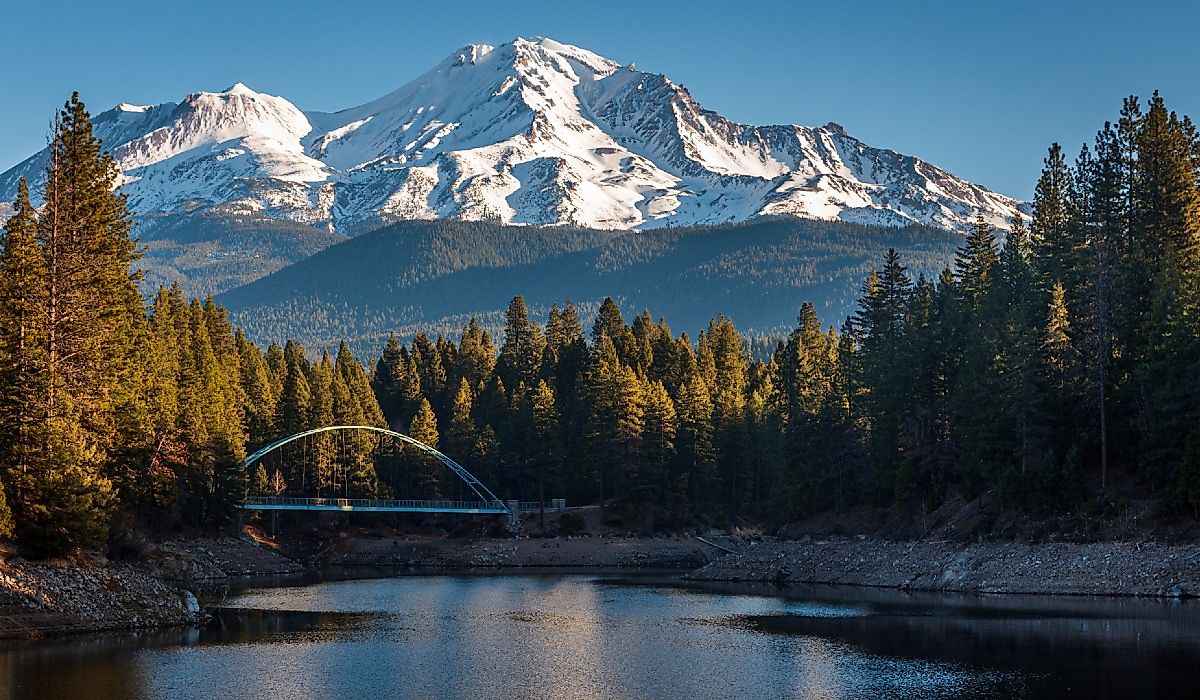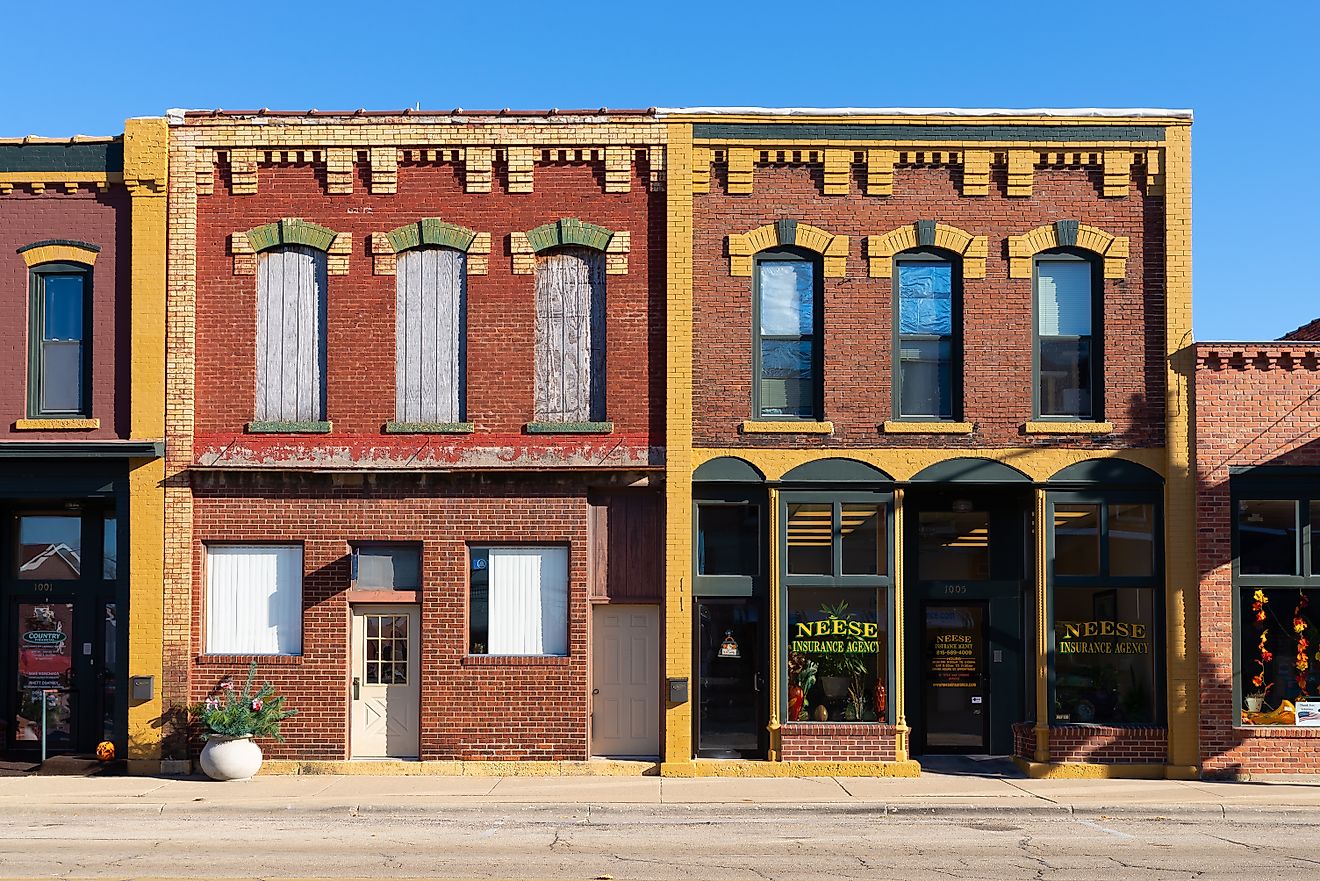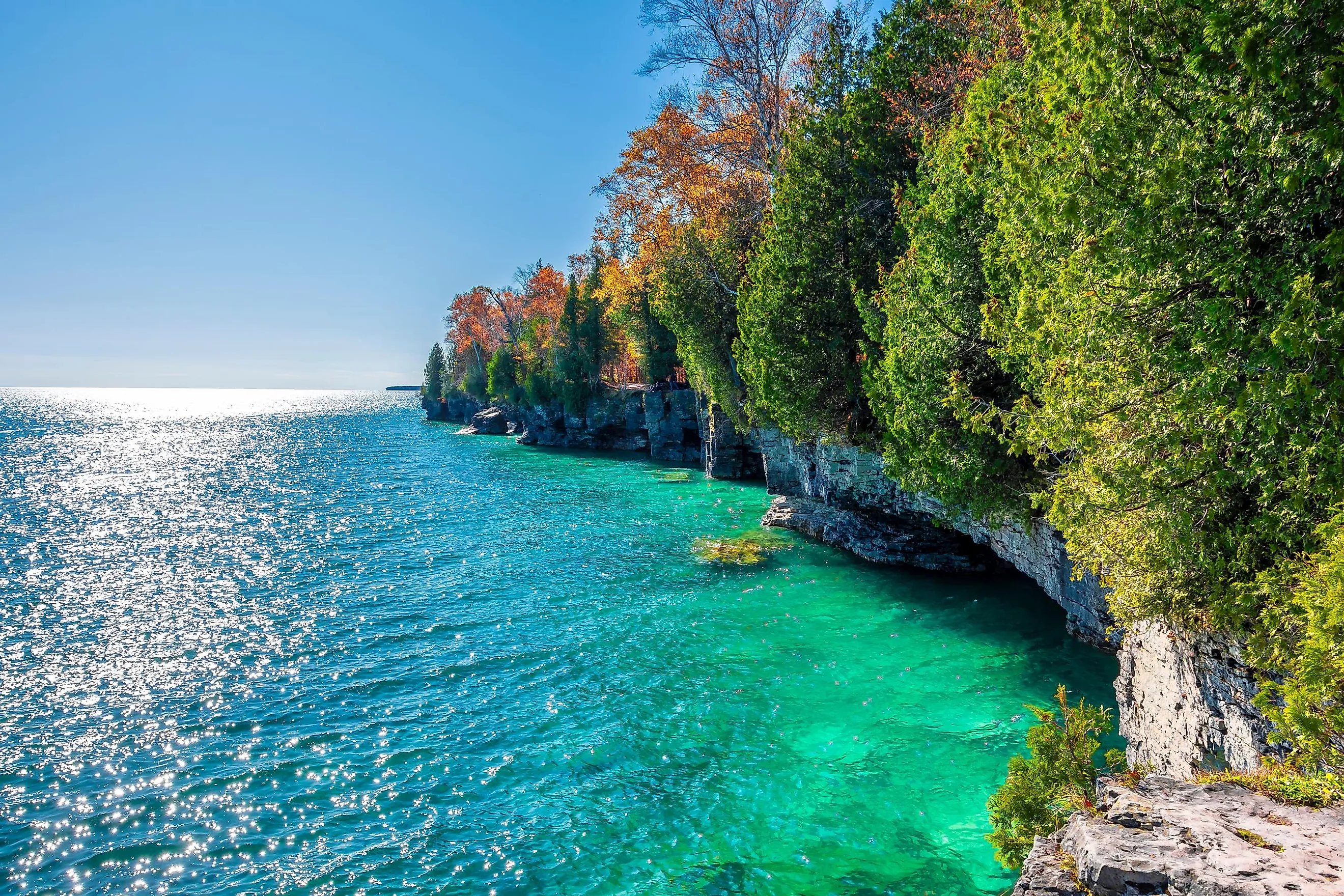
Door County, Wisconsin
In the United States, a county is defined as the administrative subdivision of a state. Covering a total area of about 6,100 km2, Door County is a large county that is located in the easternmost part of the US state of Wisconsin. The county is bordered by Kewaunee County in the south.
Often referred to as the “Cape Cod of the Midwest,” Door County was founded in 1851 and has been named after “Death’s Door” (Porte des Morts), the treacherous water passage that separates the edge of the Door Peninsula from Washington Island. Sturgeon Bay is the largest city in the county which also serves as its county seat.
Geography
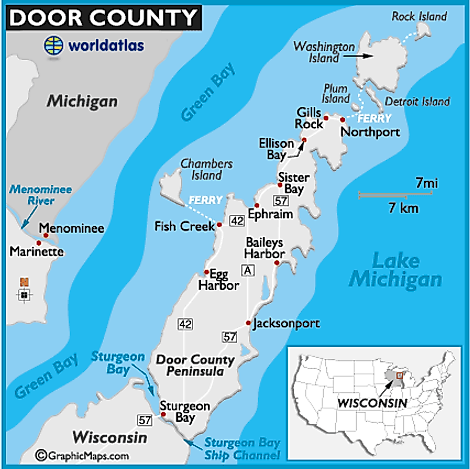
The long Door Peninsula extends into Lake Michigan and separates Green Bay (in the west) from Lake Michigan (in the east). It has a width of about 29 km at its base and gradually narrows to about 3.2 km at its northern edge. A major portion of the Door Peninsula is occupied by Door County.
The county also consists of about 482 km of shoreline which is characterized by the Niagara dolomite escarpment on the western side. The eastern part of the shoreline is characterized by progressions of dunes and sandy beaches. The county’s shores are deeply indented by several bays and harbors. A long line of rugged bluffs bordering Green Bay is the most prominent topographical feature of Door County. The county’s topography is also influenced by the underlying dolomite bedrock. Located in the southern part of Door County is Brussels Hill, which rises to an elevation of 31 m is the highest point in Door County. Several important minerals like calcite, dolomite, fluorite, gypsum, marcasite, pyrite, and quartz are found in Door County.
There are several islands in Door County. With an area of 90.6 km2, Washington Island is the largest among all the islands of Door County.
According to the Köppen climate classification, Door County experiences a humid continental climate with warm summers and snowy cold winters. The county faces an average temperature of 20.4 °C in summer and -7.8 °C in winter.
Wildlife
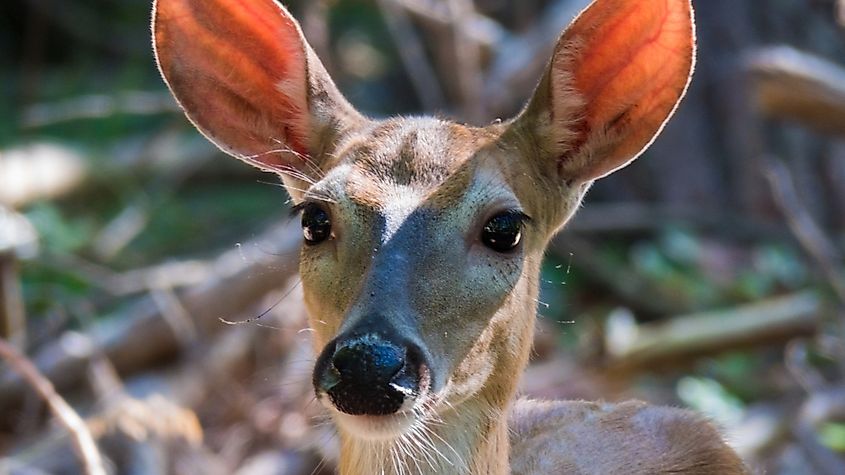
A subspecies of the eastern chipmunk, Tamias striatus doorsiensis, is endemic to the counties of Door, Northeastern Brown, Kewaunee, and Manitowoc. As per the Wisconsin Natural Heritage Inventory, about 21 terrestrial fauna and 24 aquatic fauna have been listed as “rare” in Door County. Approximately 166 avian species have been observed here. The county is also home to the northern black widow and fishing spiders.
Door County is home to Wisconsin’s five most significant state parks: Newport State Park, Peninsula State Park, Potawatomi State Park, Rock Island State Park, and Whitefish Dunes State Park. In addition to this, there are also numerous county parks and natural areas.
The Kangaroo Lake State Natural Area has the world’s highest breeding population of the endangered Hine’s emerald dragonfly. The Lake Huron locust inhabits the dunes in the county.
Brief History
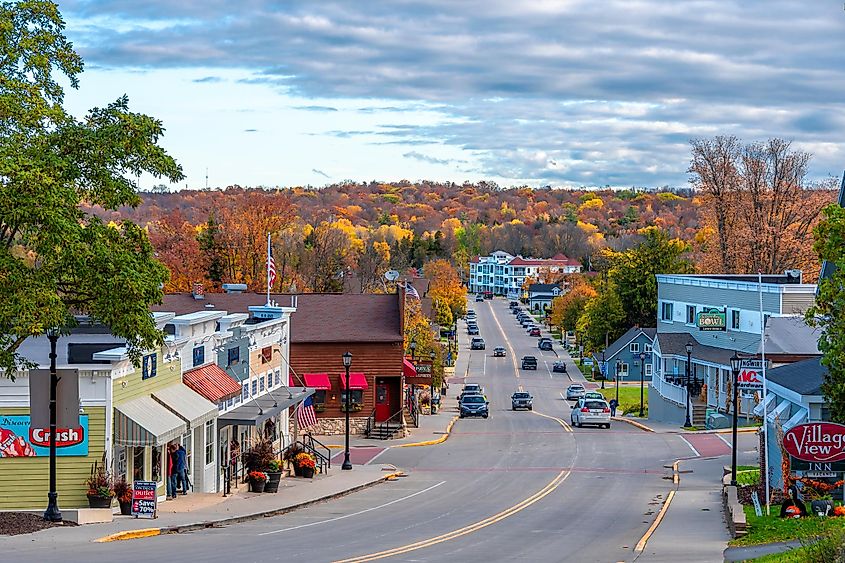
During the 19th and the 20th centuries several fisherman, farmers, loggers, and mariners migrated here and established settlements in the county. The 1862 Homestead Act made settlements in Door County affordable, and people could purchase 80 acres of land for about $18. Resort hotels were constructed near Sturgeon Bay from 1865 to 1870. The first commercial fruit (grapes) production started in 1865. During the Great Depression, a Civilian Conservation Corps was established at Wisconsin’s Peninsula State Park.
Door County is one of the Midwest’s most popular year-round tourist destinations and attracts a lot of tourists from Wisconsin, Chicago, Madison, Illinois, Milwaukee, and Minneapolis. The county offers a wide variety of recreational activities for visitors including fishing, camping, hiking, swimming, and snowmobiling. A total of 10 historic lighthouses are also found here.
Tourism, agriculture, light manufacturing, and shipbuilding are some of the other major economic activities in Door County.

